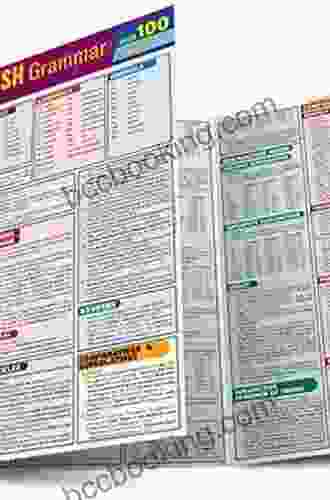The Past, Present, and Future of Utilities Consolidation: A Comprehensive Guide to Transforming the Industry

The utilities industry is undergoing a profound transformation, driven by the relentless pursuit of efficiency, sustainability, and technological innovation. Consolidation, the strategic merger or acquisition of utilities, has emerged as a powerful tool to navigate these shifting landscapes and unlock the future of the industry.
This comprehensive guide explores the multifaceted world of utilities consolidation, delving into its historical roots, examining its current implications, and peering into its promising future. By understanding the past, present, and future of consolidation, industry stakeholders can harness its transformative potential and shape a more sustainable, efficient, and innovative utilities landscape.
4.6 out of 5
| Language | : | English |
| File size | : | 2910 KB |
| Text-to-Speech | : | Enabled |
| Screen Reader | : | Supported |
| Enhanced typesetting | : | Enabled |
| Word Wise | : | Enabled |
| Print length | : | 302 pages |
| Lending | : | Enabled |
Chapter 1: The Past
The Genesis of Consolidation
The seeds of utilities consolidation were sown in the late 19th century, as small, localized utilities struggled to keep pace with the burgeoning demand for electricity. Mergers and acquisitions became a lifeline, allowing utilities to expand their reach, optimize operations, and meet the growing energy needs of a rapidly industrializing society.
Early Drivers of Consolidation
In the early 20th century, the rise of interconnected power grids further fueled consolidation. By pooling their resources and expertise, utilities could enhance reliability, reduce costs, and provide a more seamless energy supply. The advent of natural gas pipelines also played a significant role, enabling utilities to diversify their fuel sources and gain a competitive edge.
Historical Impact of Consolidation
Historical consolidations have had a profound impact on the utilities industry. Large, vertically integrated utilities emerged, dominating the generation, transmission, and distribution of electricity and gas. This consolidation led to economies of scale, improved efficiency, and increased access to energy for consumers.
Chapter 2: The Present
Current Landscape of Consolidation
Today, the utilities industry is facing a new wave of consolidation. Driven by technological advancements, regulatory shifts, and environmental concerns, utilities are seeking strategic partnerships and mergers to address the challenges and opportunities of the 21st century.
Factors Driving Consolidation
Several key factors are driving the current wave of consolidation in the utilities industry:
- Technology: Smart grid technologies, renewable energy integration, and distributed generation are reshaping the industry, necessitating scale and collaboration.
- Regulation: Evolving regulatory frameworks are encouraging consolidation as utilities seek economies of scale and compliance with environmental mandates.
- Environmental Sustainability: Utilities are consolidating to invest in renewable energy sources and reduce their carbon footprint, meeting the growing demand for cleaner energy.
Benefits and Challenges
Utilities consolidation offers numerous benefits, including improved efficiency, enhanced reliability, and access to new technologies. However, it also presents challenges, such as potential job losses, antitrust concerns, and the need for effective post-merger integration.
Chapter 3: The Future
Emerging Trends and Innovations
The future of utilities consolidation is characterized by emerging trends and innovations that will reshape the industry:
- Digital Transformation: Digitalization is unlocking new opportunities for consolidation, enabling utilities to optimize operations, improve customer engagement, and drive innovation.
- Decentralized Energy: The rise of distributed energy resources and microgrids is challenging traditional utility models, leading to new forms of consolidation and collaboration.
- Sustainability and Resilience: Utilities are consolidating to invest in sustainable infrastructure, renewable energy, and smart grid technologies, enhancing resilience and reducing environmental impact.
Future Strategies and Implications
To thrive in the future, utilities must adopt proactive strategies for consolidation:
- Embrace Technology: Invest in digital technologies and partnerships to enhance efficiency, customer service, and grid modernization.
- Promote Flexibility: Develop innovative business models and partnerships to adapt to the evolving energy landscape and meet changing customer demands.
- Prioritize Sustainability: Focus on long-term sustainability and environmental stewardship, aligning with regulatory mandates and consumer expectations.
The consolidation of utilities has played a pivotal role in shaping the industry, and its importance will only grow in the years to come. By understanding the past, present, and future of consolidation, industry stakeholders can unlock its transformative potential and create a more sustainable, efficient, and technologically advanced utilities landscape.
This comprehensive guide provides insights and strategies for navigating the complexities of utilities consolidation. Embrace the opportunities, mitigate the challenges, and prepare for a future where consolidation drives innovation, sustainability, and progress in the utilities industry.
4.6 out of 5
| Language | : | English |
| File size | : | 2910 KB |
| Text-to-Speech | : | Enabled |
| Screen Reader | : | Supported |
| Enhanced typesetting | : | Enabled |
| Word Wise | : | Enabled |
| Print length | : | 302 pages |
| Lending | : | Enabled |
Do you want to contribute by writing guest posts on this blog?
Please contact us and send us a resume of previous articles that you have written.
 Book
Book Novel
Novel Page
Page Chapter
Chapter Text
Text Story
Story Genre
Genre Reader
Reader Library
Library Paperback
Paperback E-book
E-book Magazine
Magazine Newspaper
Newspaper Paragraph
Paragraph Sentence
Sentence Bookmark
Bookmark Shelf
Shelf Glossary
Glossary Bibliography
Bibliography Foreword
Foreword Preface
Preface Synopsis
Synopsis Annotation
Annotation Footnote
Footnote Manuscript
Manuscript Scroll
Scroll Codex
Codex Tome
Tome Bestseller
Bestseller Classics
Classics Library card
Library card Narrative
Narrative Biography
Biography Autobiography
Autobiography Memoir
Memoir Reference
Reference Encyclopedia
Encyclopedia Tiffany Kuhn
Tiffany Kuhn Sean Campbell
Sean Campbell Tyler Ninja Blevins
Tyler Ninja Blevins Shaa Fazal
Shaa Fazal Stanley Marcus
Stanley Marcus Thomas Tregner
Thomas Tregner Seth Berkman
Seth Berkman Sheldon Siegel
Sheldon Siegel Yehudah Mirsky
Yehudah Mirsky Izumi Miyazono
Izumi Miyazono Veronica Strang
Veronica Strang Tara Dixon Engel
Tara Dixon Engel Sue Prideaux
Sue Prideaux Natasha Ngan
Natasha Ngan Stephan Talty
Stephan Talty Randall Parrish
Randall Parrish Kindle Comixology
Kindle Comixology Jodi Ellen Malpas
Jodi Ellen Malpas Will Hart
Will Hart Judy Ford
Judy Ford
Light bulbAdvertise smarter! Our strategic ad space ensures maximum exposure. Reserve your spot today!

 Neil GaimanTono Monogatari Shigeru Mizuki: A Timeless Literary Masterpiece Enhanced by...
Neil GaimanTono Monogatari Shigeru Mizuki: A Timeless Literary Masterpiece Enhanced by...
 Davion PowellUnravel the Enigmatic Cork Connor Mystery: A Journey of Intrigue and Suspense
Davion PowellUnravel the Enigmatic Cork Connor Mystery: A Journey of Intrigue and Suspense Douglas PowellFollow ·2.8k
Douglas PowellFollow ·2.8k Elmer PowellFollow ·2.6k
Elmer PowellFollow ·2.6k Art MitchellFollow ·14k
Art MitchellFollow ·14k Truman CapoteFollow ·10k
Truman CapoteFollow ·10k John UpdikeFollow ·9.9k
John UpdikeFollow ·9.9k Shannon SimmonsFollow ·9.6k
Shannon SimmonsFollow ·9.6k Colton CarterFollow ·10.3k
Colton CarterFollow ·10.3k Jermaine PowellFollow ·10.3k
Jermaine PowellFollow ·10.3k

 Amir Simmons
Amir SimmonsImmerse Yourself in the Enchanting Realm of Nora Roberts'...
Prepare to be captivated by...

 Dan Henderson
Dan HendersonUnleash the Explosive Action of Going Ballistic Combined...
Prepare for an...

 Jeffery Bell
Jeffery BellDiscover the Controversial and Captivating "The Anarchist...
In the realm of literature, there are...

 Ryan Foster
Ryan FosterUnveiling Lincoln's Eloquence: How His Greatest Speeches...
In the annals of American...

 Jaime Mitchell
Jaime MitchellLove Radio Vinny Berry: A Journey of Heartbreak, Healing,...
Vinny Berry's...
4.6 out of 5
| Language | : | English |
| File size | : | 2910 KB |
| Text-to-Speech | : | Enabled |
| Screen Reader | : | Supported |
| Enhanced typesetting | : | Enabled |
| Word Wise | : | Enabled |
| Print length | : | 302 pages |
| Lending | : | Enabled |










